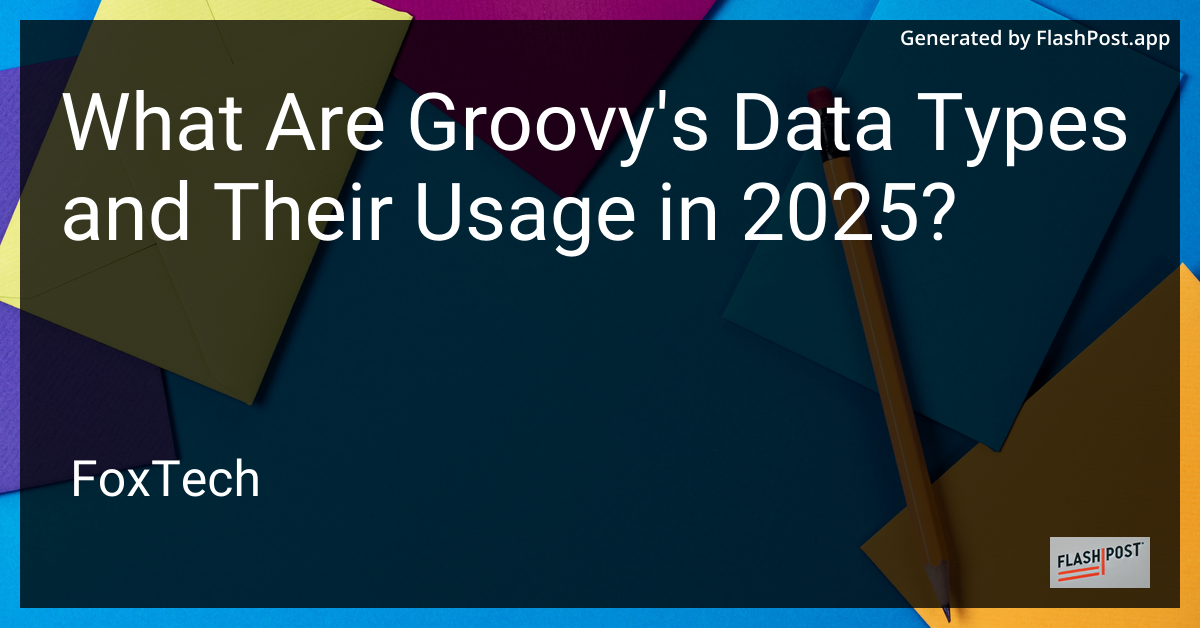
As the adoption of Groovy continues to soar in 2025, understanding its data types and their usage has become crucial for developers looking to leverage its power for JVM-based applications. Groovy, as a dynamic language for the Java platform, provides a wide array of data types that offer flexibility, efficiency, and ease of integration, particularly in dynamic and enterprise environments.
Overview of Groovy Data Types
Groovy’s data types are broadly categorized into primitive data types, reference data types, and collections, all of which align seamlessly with Java classes, but with added syntactic sugars and dynamic capabilities.
1. Primitive Data Types
Groovy supports all of Java's primitive data types and adds automatic conversion between these types and their corresponding wrapper classes. The key primitive data types include:
- int: Represents a 32-bit signed integer. Usage is straightforward for counting or indexing.
- long: A 64-bit signed integer, used for large numerical values or when
intoverflows. - double: A double-precision 64-bit IEEE 754 floating point, popular for scientific calculations.
- boolean: Denotes true or false values, predominantly used in logical operations and control flow.
2. Reference Data Types
Beyond primitives, Groovy harnesses the power of reference data types, which are objects:
- String: Much like Java, strings in Groovy are immutable. Groovy simplifies string handling with features like GString for interpolation.
- Date and Calendar: For date manipulation, Groovy provides enhanced capabilities over Java’s
DateandCalendarobjects. - Custom Objects: Groovy allows for dynamic creation of objects with behaviors and properties defined on the fly, enhancing flexibility.
3. Collections
Groovy’s collection types, based on Java's collections, enable powerful grouping and management of data:
- List: A dynamic array allowing different data types, supporting easy iteration and manipulation.
- Map: Key-value pairs enabling fast retrieval, common in configurations and data representations.
- Set: A collection of unique elements, particularly useful in scenarios where duplicates are unwanted.
Usage and Best Practices in 2025
As businesses and developers pivot towards more dynamic languages, Groovy's data types offer critical advantages:
- Dynamic Typing and Conciseness: Groovy’s dynamic nature allows developers to write less boilerplate code, accelerating development time.
- String Handling with GStrings: With their easy-to-use syntax for interpolation, GStrings streamline code that needs frequent variable embedding.
- Efficient JSON Parsing: Leveraging advanced libraries and Groovy's native support, handling JSON data becomes more intuitive, crucial in API-driven applications.
- Seamless Integration with Java: Given Groovy’s ability to leverage Java libraries effortlessly, it continues to be the go-to choice for legacy system upgrades or integrations.
Modular Programming and Groovy
Heading into 2025, Groovy's usage in modular programming grows, aiding developers to create more scalable and maintainable applications. The language’s capability to replace traditional methods, as discussed in resources like the Groovy Programming Tutorial, showcases its evolving nature.
Performance Optimization
With a mature ecosystem around caching and concurrent processing, Groovy facilitates performant applications. Techniques such as query caching enable rapid database interactions, demonstrating Groovy's prowess in enterprise solutions.
Conclusion
Groovy's robust data types and their strategic implementation represent a vital asset for developers navigating the demands of modern software development in 2025. As expectations for seamless integration, dynamic coding, and rapid deployment continue to rise, Groovy stands out as an indispensable tool in the programmer's toolkit.
Whatever the project or domain, understanding and utilizing Groovy's data types efficiently can empower developers to create powerful, reliable, and future-ready applications.